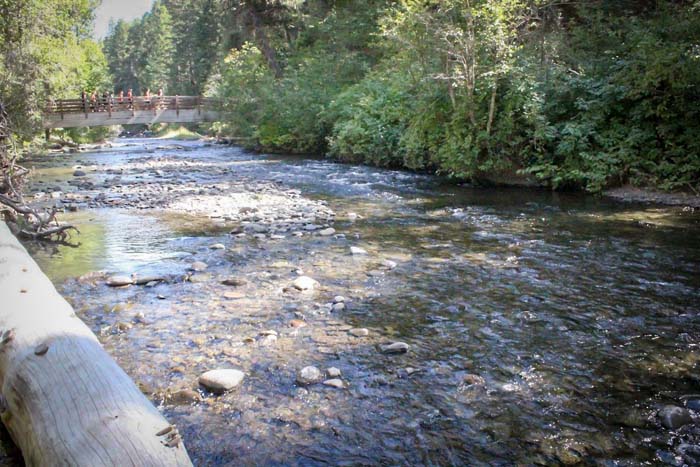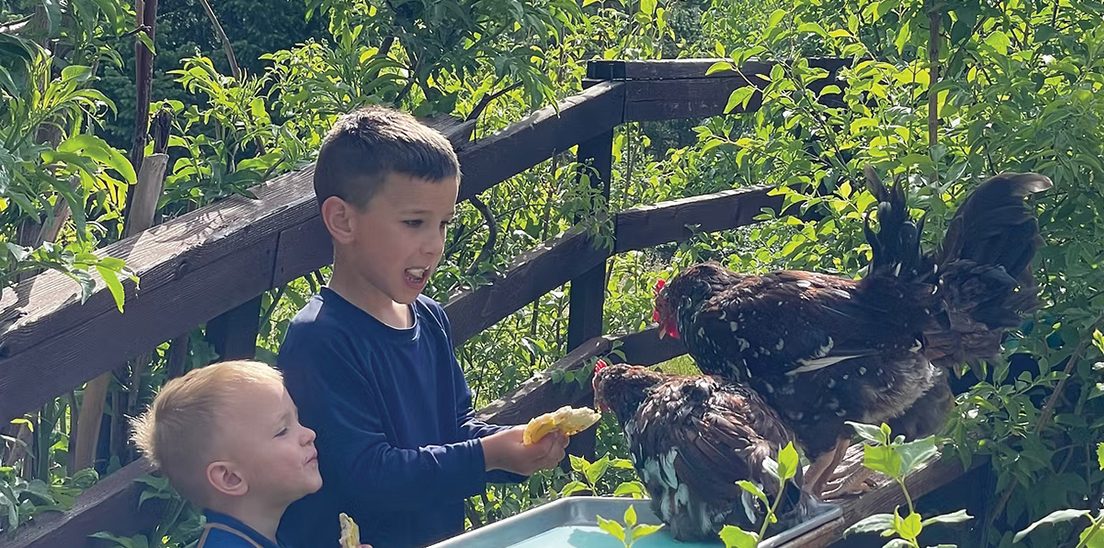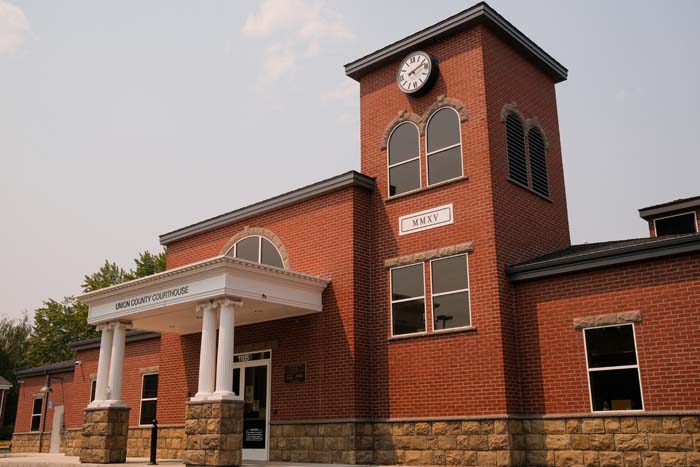B2H Transmission Line to break ground in fall
Published 7:00 pm Monday, August 7, 2023

- Kreider
BOARDMAN — It has been 15 years since Idaho Power and PacifiCorp announced their plans to build a nearly 300-mile-long transmission line from Boardman’s Longhorn Substation to the Hemingway Substation in Owyhee County, Idaho, to meet the region’s growing demand for energy.
Trending
Idaho Power leads the construction and permitting process for the Boardman to Hermingway project.
A public comment period recently wrapped on the first amendment to the project — a part of the state of Oregon approval process that allows Idaho Power to make changes to its original plans, including variances to accommodate the needs of the many, many landowners whose land the project will span.
Joe Stippel, B2H project manager, said Idaho Power is on track to break ground by fall and expects construction to be completed by June 2026.
Trending
“We are so excited after all these years to break ground and for (B2H) to begin serving the Northwest,” he said. “We’re kind of in the preconstruction mode … we’ve passed most, if not all of our regulatory hurdles. We’re really just working through our preconstruction obligations with the Bureau of Land Management, the state, department of energy — just checking off those boxes.”
Come fall, he said, communities can expect to see a light start to construction, focusing on building and updating some 900 miles of new and existing service roads, as well as installing foundations for the towers themselves.
The 100- to 180-foot-tall steel transmission towers will carry 500 kilovolt single-circuit lines and be spaced 1,200 feet apart on average with a 100- to 250-foot right of way.
B2H will deliver up to 1,000 megawatts of power in each direction.
PacifiCorp owns 55% of the project, while Idaho Power owns 45%. Idaho Power will recover part of its cost to build by delivering energy to Bonneville Power Administration customers in Eastern Idaho, per an agreement finalized in March.
Stippel said a lot of the electricity carried by B2H will serve Portland-based PacifiCorp’s Portland metro area customers during the wintertime. However, the transmission line also will serve a larger role in regional energy stability.
“There are a lot of transmission line projects being kicked off right now and states are trying to fast-track a lot of them because we’re seeing there’s going to be a need for that interconnected grid,” Stippel explained.
“These large projects, they’re really critical as we’re pivoting to renewables,” he added.
He said B2H will help balance the output of various plants with the rest of the grid, transporting power from where it was generated to where it is needed to reduce the likelihood and duration of outages. This will be especially important for the Pacific Northwest’s winter peak in demand and the Intermountain West’s summer peak when hydropower production in the Northwest is at its height.
Stippel likened B2H to an interstate highway for moving energy with direct benefits to Eastern Oregon.
“There has been transmission on the lower voltage lines that’s being distributed across some 130 (volt) and 230 (volt) lines. … Those smaller lines are pretty congested right now,” he said. “Those are like state highways and we’re building the freeway. B2H will take traffic off those highways and put them on the freeway.”
Freeing up that capacity enables more opportunities for local development that might be limited by the capacity of existing infrastructure.
Though industrial-scale battery storage and more localized microgrid technologies are in development and gradually making their way to market to join other alternative solutions such as solar fields and gas plants, at this time, none investigated could affordably scale to meet the energy needs that Idaho Power and PacifiCorp see on the horizon, according to Sven Berg, Idaho Power corporate communications specialist.
“I think that gap is going to continue to exist,” Stippel said. “I see transmission and an increasingly interconnected grid as continuing to be the solution for decades to come.”
Scrutiny and skepticism
Some doubt this vision.
The Stop B2H Coalition is a 501(c)(3) nonprofit organization of more than over 1,000 volunteers and several member organizations including Oregon Rural Action, many of whom have been pushing back against the project since the early 2010s.
Acting as whistleblowers and watchdogs each step of the way, the group has advocated for environmental, historical, cultural, agricultural and forest resources and has helped arm landowners whose land B2H and its supporting infrastructure will pass through with information and resources to negotiate the best outcome from their relationship with their new neighbor.
According to the Stop B2H website, the organization believes that “decentralized and democratic clean energy systems are vital to helping the U.S. transition to a decarbonized energy system and modernized grid,” a statement that alludes to some of the same technologies that Idaho Power said are cost-prohibitive alternatives at this time.
“We’re not so grandiose as to think we’re going to kill this line,” said Jim Kreider, who co-chairs Stop B2H with his wife, Fuji Kreider. “It’s unlikely to be nullified at this point. … It’s more about right siting.”
Stop B2H has had victories in altering the course of B2H to avoid resources in the communities the line will cross, as well as in securing provisions for landowners and scenic and protected areas. Stop B2H even went to bat at the Oregon Supreme Court. Jim Kreider himself has participated in a right siting group the Legislature formed.
The Kreiders expressed the sense that state regulatory agencies lack the staffing and funding resources to fully supervise the approval process of projects this size and hold developers to every letter of the law. Kreider added that the state can’t guarantee protection of the interests of every individual landowner along hundreds of miles of transmission line.
The Kreiders are retired, or, as they said of their eight years of effort with Stop B2H, are supposed to be.
“Everyday folks are not used to engaging at this level in the process,” Fuji Kreider said. “Even now, there are still people employed full-time and working hard to protect what they had. Most people who can put in the time and legwork are retired. There is no way people raising families or young people could keep up with it. … The developers just drown us in paperwork.”
“I want to emphasize that Idaho Power has this whole idea where we operate with integrity and transparency on everything we’re doing and we try to over-communicate what’s happening,” Stippel said, noting that as construction begins, a dedicated land liaison has been appointed who will continue to work with landowners.
“We’re doing things to minimize our impact,” he said. “It’s a large construction project and no-impact is impossible to achieve, but we’re committed to being good neighbors and good stewards. I think the amount of scrutiny (B2H) went through to this point with federal and state agencies shows that we’re really balancing the needs of society to get the project done and balancing the environmental needs of landowners.”
Amendments and mitigation
Stop B2H is following amendment approval and mitigation processes closely.
Stippel said “amendments are really to the benefit of landowners,” explaining it’s where his team is able to request site variances and honor easement agreements struck with landowners not included in their original application.
He said due to Oregon laws, they can’t manipulate the site boundary even if the change would be a “one-for-one switch on the same parcel” without including it in a new amendment. Stippel said it can get complicated and confusing for public eyes watching when, for example, Idaho Power proposes a new access road.
“We’re not actually intending to use it, but it’s a backup in case the one we first proposed gets denied,” he said. “There’s a perception that we’re adding more roads, but we’re not actually going to build both, we’re just proposing them as options.”
He explained that if they didn’t do that, they could be denied one and not get a road at all.
Jim Kreider said some amendments do seem to include larger infrastructure components such as midline capacitor stations that STOP B2H feels should have been in the original application. Such moves he said feel deceptive.
Though B2H will feature multiple amendments, Stippel said that “the last amendment will be to shrink everything back down so that the site boundary is around the finalized road access. … The intent is to know the possible extent of impact.”
“There are some folks who don’t want it on their property and we try to work with them to find a solution that’s mutually acceptable to everyone,” Stippel said, though he did acknowledge Idaho Power’s authority to condemn property that owners aren’t willing to negotiate an easement for.
“I know most if not all of the landowners’ names and can see their faces,” he continued. “It is going to be a partnership going forward with each of our stakeholders, during construction and afterward when the line is energized and serving the Northwest.”
More information about the Boardman to Hemingway Transmission Line is available at shorturl.at/EHWX9.
More about the STOP B2H Coalition’s efforts is online at at stopb2h.org/.









